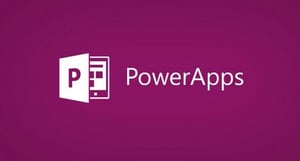 Working with stored procedures in Power Apps? This can be done with using tools like Microsoft Power Automate. Power Apps works great when passing a single value into a stored procedure, but what if I have a multi-value array? Things can get a little trickier when you have complex stored procedures.
Working with stored procedures in Power Apps? This can be done with using tools like Microsoft Power Automate. Power Apps works great when passing a single value into a stored procedure, but what if I have a multi-value array? Things can get a little trickier when you have complex stored procedures.
In this demo I’ll show you how to use Power Apps to send arrays as parameters into a stored procedure using JSON and Power Automate. This can be used to solve more complex stored procedure filtering with OPENJSON.
My example will use a simple application I built to go through and multi-select a list of projects that I want to activate or de-activate. When I change the status of certain projects, I want to see the status changed in another gallery in my app.
Stored procedures accept single parameters easily inside SQL Server or Oracle. But what if we want to do a more complex situation that you want to do inside of a stored procedure? Watch my video below to see a pretty easy way to do this.
Want to learn more Power Apps? Our On-Demand Learning platform has Power Apps and Power Platform courses as part of our 50+ library of courses. If you would like us to build apps for you, we can help with that too. Our Shared Development offering gives you expert development time to extend your team to build the beautiful reports, dashboards, and apps you need – all at a fraction of what it would cost for a full-time developer. Click below to learn more.
Don't forget to check out the Pragmatic Works' on-demand learning platform for more insightful content and training sessions on Power BI, Power Apps, Power Automate, Copilot Studio, Fabric, Azure and other Microsoft applications. Be sure to subscribe to the Pragmatic Works YouTube channel to stay up-to-date on the latest tips and tricks.
It's also easy to get started with your 7-day free trial. Just click below and you'll be on your way.


-1.png)
Leave a comment